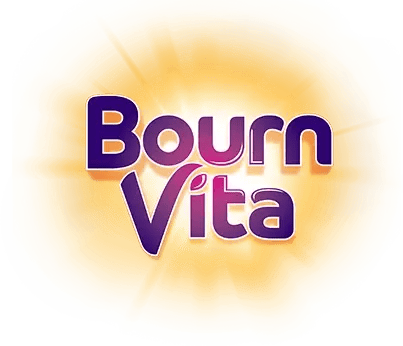- Khichdi
- Curd Rice
- Mashed Potatoes
- Stewed Apples
- Moong Dal
- Paneer Bhurji
- Upma
Introduction

Soft foods are a big part of a child’s and teenager’s diet, especially during recovery, dental changes or when you want lighter meals. These foods are gentle on the stomach, easy to chew and packed with nutrients that young bodies need for growth and energy. Choosing the right soft diet ensures kids get protein, vitamins, minerals and fiber without any discomfort.
For kids, soft meals are often associated with early eating habits or days when they don’t feel like eating heavy food. For teens, they can be useful during orthodontic treatment, post sports fatigue or just as a comfort food in between demanding schedules. The key is to make these foods nutritious and appealing so they don’t feel bland.
Traditional options like khichdi, curd rice and porridge are family favorites because they combine comfort with nutrition. Fruits like bananas or stewed apples, soft paneer and lightly cooked dals are an easy and balanced way to keep energy levels steady. By mixing taste with gentle textures, soft diets become a part of healthy eating for kids and teens.
7 Gentle Foods for Children and Teens That Nourish and Comfort

Soft foods often become necessary during phases of recovery, dental growth, or simply when light and easy meals are preferred. For children and teens, a soft diet doesn’t mean compromising on nutrition. In fact, carefully chosen soft foods can supply protein, vitamins, minerals, and fiber in a form that is both gentle on the stomach and enjoyable to eat. These foods are also versatile, fitting into daily meals while supporting growth and overall health.
Khichdi
Made with rice and lentils, khichdi is light, wholesome, and easy to digest. According to a study published in Nutrients. 2021, it provides a good mix of carbohydrates for energy and protein for muscle repair. Adding vegetables like carrots or beans makes it more nutritious without losing its soft texture. For kids, khichdi works as a complete meal, while for teens, it becomes a comforting option after a long day.
Curd Rice
This South Indian favorite combines soft rice with curd, according to FSSAI, curd offers probiotics for gut health and calcium for bone strength. It is particularly useful during hot weather as it cools the body and aids digestion. Curd rice is mild in flavor, making it appealing to children, and it can be paired with simple sides like soft vegetables or a drizzle of ghee for added taste.
Mashed Potatoes
As per a study published in Adv Nutr. 2013 potatoes are rich in carbohydrates and potassium, giving children and teens long-lasting energy. When mashed with a little milk or butter, they become creamy and easy to eat. Mashed potatoes can be served on their own or paired with soft vegetables like peas or carrots. They are especially useful for kids recovering from dental changes or for teens who need a quick, filling meal.
Stewed Apples
Research published in Heliyon. 2020 shows that apples, when stewed or lightly cooked, turn soft while retaining fiber and Vitamin C. They are gentle on the stomach, making them ideal for kids during recovery from illness. For teens, stewed apples can be a healthy dessert alternative, satisfying sweet cravings without processed sugar. A sprinkle of cinnamon adds flavor while keeping the dish light and nutritious.
Moong Dal
Among lentils, moong dal is considered the easiest to digest. A study published in Nutrients. 2019, it provides protein for growth, iron for healthy blood, and fiber for digestion. Cooked as a simple dal or in a soft soup-like consistency, it is suitable for children of all ages. For teens, it makes a light yet nourishing dinner option, especially when paired with rice or soft chapati.
Paneer Bhurji
Research conducted by J Food Sci Technol. 2011 highlights, paneer is rich in protein and calcium, both vital for growing bodies. Paneer bhurji, made by lightly cooking crumbled paneer with mild spices, is soft and easy to eat. It can be served with soft chapati or even mixed with rice. For younger kids, it can be made plain and smooth, while teens can enjoy slightly more seasoned versions.
Upma
Made from semolina, upma is soft, fluffy, and filling. According to the Dietary Guidelines for Indians, it is rich in carbohydrates and can be enhanced with vegetables for added nutrition. Upma is easy to digest, making it a suitable breakfast or evening meal for kids and teens. It keeps energy levels steady without feeling heavy and can be flavored mildly to suit younger children or more spiced for older teens.
Conclusion

Soft diet foods are carry the power to nourish and strengthen. Khichdi and curd rice bring comfort, mashed potatoes and stewed apples add variety, moong dal and paneer bhurji provide protein, while upma delivers wholesome energy. Together, these foods offer gentle textures with complete nutrition, ensuring children and teens get the fuel they need for growth and well-being. By making these dishes part of daily meals, you give young bodies the perfect balance of comfort and strength.
Her love for storytelling began with reading her grandfather’s speeches, where Tarishi saw the power of words in creating lasting memories. Combining her passions for food and writing, she has turned her life into a fulfilling path of sharing stories that celebrate flavours and how food brings communities together.
The views expressed are that of the expert alone.
The information provided in this content is for informational purposes only and should not be considered a substitute for professional medical advice, diagnosis, or treatment. Always seek the advice of your physician or another qualified healthcare provider before making any significant changes to your diet, exercise, or medication routines. This is a sponsored article.
References
https://www.nin.res.in/downloads/DietaryGuidelinesforNINwebsite.pdf
https://pmc.ncbi.nlm.nih.gov/articles/PMC4008736/
https://pmc.ncbi.nlm.nih.gov/articles/PMC6627095/
https://pmc.ncbi.nlm.nih.gov/articles/PMC7644892/
















